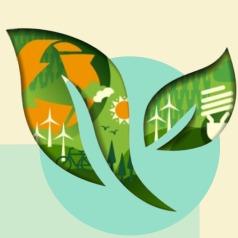Green Life Hub
"Empowering Sustainable Living, One Click at a Time."
Created on 31st March 2024
•
Green Life Hub
"Empowering Sustainable Living, One Click at a Time."
The problem Green Life Hub solves
The project's stated goal is to encourage environmentally friendly lifestyles and give people the knowledge and resources they need to make these changes. The objective is to develop a digital platform that covers several facets of sustainable living, such as resource consumption, waste reduction, and environmental effect. This platform is probably going to be a website or mobile application.
The following are the problem statement's main elements:
-
Lack of Awareness: A lot of people are not completely conscious of how their everyday actions, such as energy use, food waste, and carbon footprint, affect the environment.
-
Need for direction: In order to successfully embrace sustainable habits, people need resources and direction. This could contain details about eco-friendly goods, trash management strategies, and energy-efficient substitutes.
-
Complexity of Information: There are several aspects to sustainable living, including transportation decisions, water use, waste management, and energy conservation. It could be too much for users to handle when sorting through this information and making lifestyle adjustments.
-
Motivation and Tracking: To monitor their advancement towards sustainable objectives, people require both tools and motivation. This could involve keeping an eye on how much they use, measuring the money they save by implementing eco-friendly practices, and being aware of their environmental impact.
-
Access to News and Updates: People who are dedicated to leading more environmentally conscious lives must keep up with the most recent advancements, news, and solutions in the field of sustainability.
-
Specific Focus Areas: Specialised expertise and direction may be needed for some elements of sustainable living, such as composting and food disposal. Giving users access to materials or sections specifically covering these subjects can improve their knowledge of and use of sustainable techniques.
Challenges we ran into
The main challenge we had to face were :
Data Integration: To guarantee accuracy and consistency, it is necessary to carefully handle the harmonisation of diverse data sources for comparison.
NLP Model Training: Especially in the complex field of sustainability, training NLP models to extract pertinent insights from textual data requires computational resources and experience.
Semantic Understanding: Determining the semantic meaning of content pertaining to sustainability is difficult and calls for specific algorithms that can comprehend intricate subjects.
API Maintenance and Integration: Including external APIs presents a number of issues, including versioning, compatibility, and maintaining functionality in the face of API changes.
Technologies used
